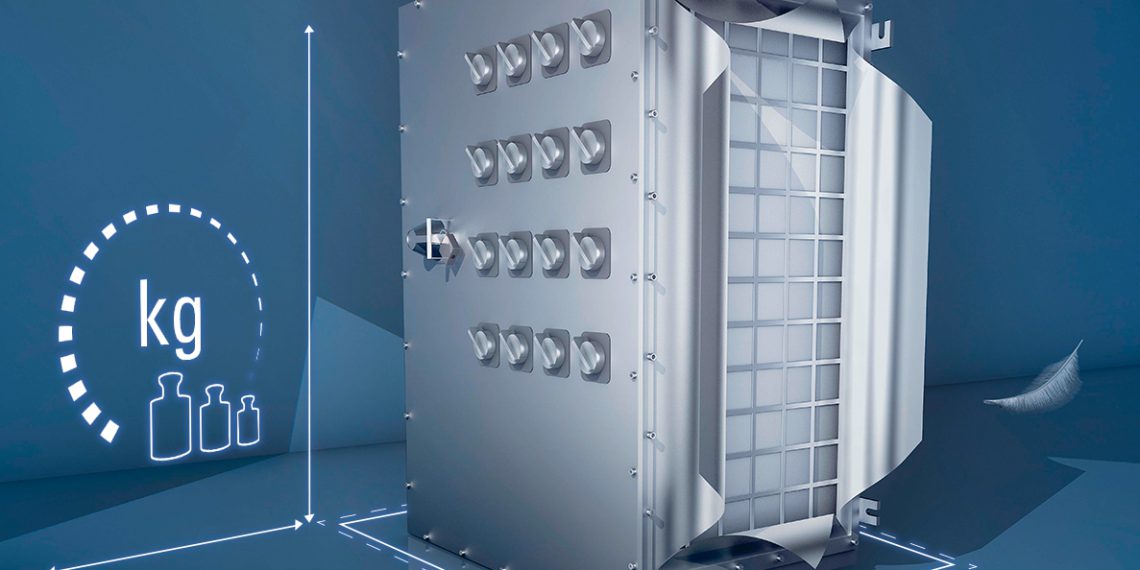R. Stahl’s new explosion-protected Ex d Ex Pressure enclosure technology is a futureproof alternative to conventional enclosure encapsulation. Complete switchgear assemblies and distribution boards can be housed in a single Ex Pressure enclosure, saving significant amounts of space and weight and making maintenance a whole lot easier. Components can be quickly retrofitted, modified or removed at any time and with little difficulty. The innovative Atex- and IECEx-certified Ex Pressure switch cabinet series features a unique pressure relief system.
Special stainless steel wire mesh ensures that pressure within the enclosure can be reduced effectively, serving as a flameproof barrier that allows for a controlled flow of gas coupled with heat absorption. This reduces the internal pressure in the event of an explosion to a maximum value of less than 1 bar; sparks that might otherwise cause an explosion are safely contained inside the enclosure thanks to the special mesh structure. The Ex d‑certified pressure-relief technology allows for wall thicknesses of just 2 mm; compared to conventional Ex d flameproof enclosures, thereby helps to save space requirement and up to 50% weight. Additionally, this makes transportation, handling and installation significantly easier. The Ex Pressure concept also proves to be a viable alternative and has many attributes when compared with Ex p pressurized enclosures – it is more efficient and involves far less design work.
R. Stahl’s stainless steel enclosure with Ex Pressure technology comes in a choice of four enclosure sizes, ranging from 300 x 400 x 200 mm to 1000 x 1400 x 700 mm. These IP66-rated switch cabinets are available with either a single-leaf door or a double door. The large, undivided space inside the enclosure provides easy, unobstructed access for installation, maintenance and inspection work. The volume available within the enclosure for installing equipment is identical to that of many conventional industrial switch cabinets and control boxes and allows the switchgear layout used for non-hazardous areas to be used unchanged for hazardous areas without any additional engineering work.

















